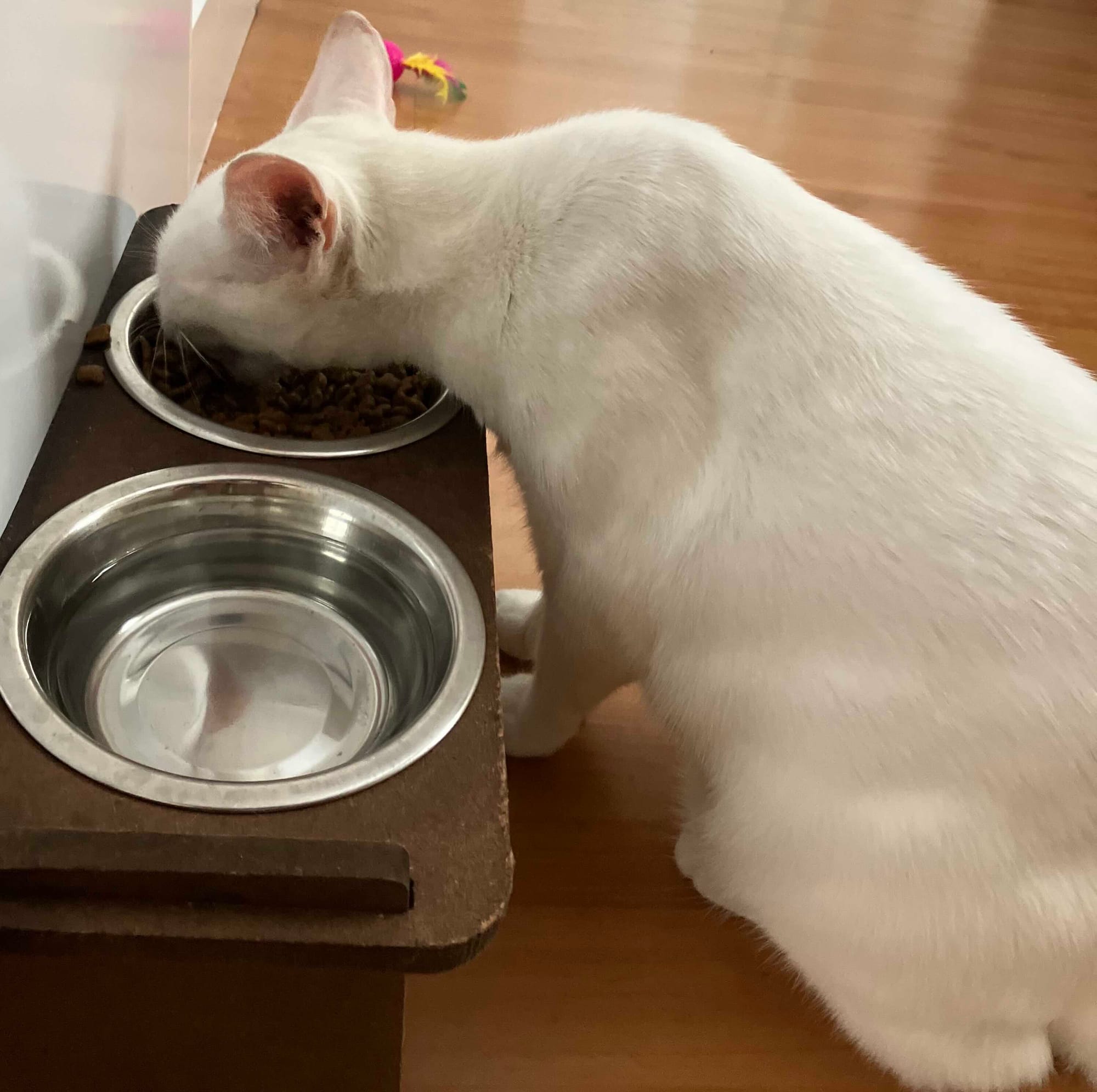Choosing the right indicators
Having the right indicators and measuring them correctly is critical for success, but much harder than it seems.

Having the right indicators and measuring them correctly is critical for success, but much harder than it seems:
- We may not know what to measure
- Some things are really hard to measure
- Others take longer for us to know if they're working
- Many cease to be a good measure when they become a goal (Goodhart's Law)
So let's talk about these challenges by discussing how I've changed my diet over time.
Optimizing time with diet
Dieting was never a big part of my life. I luckily never struggled with weight gain or had any diet-related health conditions.
I was also never into sugar and sweets, which helps.
What I did always have though is a drive for optimizing things, and my diet was frequently an optimization target – more often to optimize my time than my health.
This time optimization through diet was tricky because optimizing time typically comes with problematic health trade-offs. Food is often either quick or healthy.
One of my first experiments in dietary optimization was intermittent fasting. Here there were all these people on the internet talking about how intermittent fasting was healthy for you.
Intermittent fasting was the best of both worlds: I could skip lunch, get more work done, and be healthier to boot!
The problem with my intermittent fasting is that while I could accurately track my time then, I couldn't accurately track my health. What should I be measuring anyway?
My blood work at the time wasn't good, but it also wasn't bad. It was "normal," whatever that means. In my experience, most people's blood work isn't a big deal unless their doctor tells them that it is.
And my doctor finally did have that conversation with me when I switched my diet again.
High cholesterol, high iron
Later on, I changed my diet to be more protein and fat based, because people were talking about the benefits of low carb and ketogenic diets. I was also influenced by Gary Taubes's book "Good Calories, Bad Calories", based on his "What if It’s All Been a Big Fat Lie?" NYT article.
The great thing about Good Calories, Bad Calories is that it was based on scientific research, which I thought was quite unique. Finally, reliable information on what to eat!
But the challenge of nutrition, like many other areas of business and life, is that while there's a truth "out there" about how things really work, there's no guarantee that current scientific research will reveal it.
When I did my routine checkup, my doctor told me: "OK, I'm gonna put you on statins because your cholesterol is too high." – I was shocked. Wasn't I healthy?
I pleaded with him to let me fix it with a dietary change, but he suggested against it: "Maybe take the statins to lower it, and then control it with your diet." – that's what I did.
Besides cholesterol, I also had excess iron (ferritin). While the maximum suggested level is 400-500 ng/mL, mine was over 1,000! It turned out to be a genetic condition that can cause numerous health problems, from liver disease to heart complications, common symptoms of hemochromatosis.
The treatment for excess iron and hemochromatosis is blood-letting – literally bleeding you out. I asked my doctor if I could control it with my diet, and he flat out said, "No, it isn't possible."
Soon after that wake-up call, I hit the books.
Fixing my health, then blowing it again
I did fix my cholesterol and iron levels by changing my diet after some serious research. I unfortunately then relapsed, and together with many other indicators, both levels shot back up.
Interestingly, what I did to control my cholesterol and iron was the same thing that I did to blow them up:
A vegan diet.
There's significant amount of research backing up a plant-based diet as healthy. But as I learned from my previous experience, being scientific research doesn't mean it's true.
Fun digression: In the book The Half-Life of Facts: Why Everything We Know Has an Expiration Date, Samuel Arbesman talks about how scientific facts in a field seem to have a half-life, a somewhat consistent number of years by when about half of what is known in that field gets invalidated by new research.
Anyway, I now had a way to know whether I was doing well or not: measuring iron and cholesterol.
I changed my blood work routine from every year to every 2-3 months and started tracking them. Here's my LDL and Iron over several years:

I had gotten and controlled my LDL to ~100 mg/dL and my ferritin to under 450 ng/mL, my reference numbers.
But recently, both numbers shot back up. Why? I started optimizing another variable: strength.
I was a vegan throughout this time. But when optimizing strength, my intake of processed foods, supplements, and calories changed drastically.
Since it’s challenging for vegans to meet the daily protein intake commonly suggested for muscle growth (~2g/kg), I was relying heavily on supplements and processed food to fill that gap.
I also got lazy and began indulging more in unhealthy vegan food like impossible burgers and french fries.
It's time for another change, and I'm changing it now.
How my new vegan diet works
First, I've temporarily removed my strength (or weight) gain as an indicator to maximize. My focus is again on lowering cholesterol and iron, which likely means losing weight.
My other learning is that following a single dietary rule, while simple, is not enough to be "healthy." Obvious in hindsight, but hard to follow day-to-day.
So instead of a simple rule, I now have 6 rules of restrictions, and 6 guidelines for what to eat (formatted by ChatGPT):
6 Rules of Restriction (What to Avoid)
1. No Animal Products
• Avoid all meat, dairy, eggs, and animal-derived ingredients.
2. No Processed or Refined Foods
• Stick to whole foods; avoid refined grains, packaged snacks, and artificial additives.
3. No Added Sugar or Sweeteners
• Eliminate sugars, syrups, and artificial sweeteners.
4. No Added Salt (<100 mg added sodium per day)
• Use herbs, spices, vinegar, and lemon for flavor.
5. No Oils or Fried Foods
• Avoid all added oils and fried foods, even plant-based ones.
6. Saturated Fat Limit: 5g/day
• Avoid high-saturated-fat foods like coconut products, vegan cheeses, and processed meat substitutes.
6 Guidelines for Food Selection (What to Eat)
1. Whole Grains
• Focus on brown rice, quinoa, oats, and whole-grain pasta.
2. Legumes and Plant Proteins
• Include lentils, beans, chickpeas, and tofu.
3. Vegetables and Leafy Greens
• A cruciferous vegetable (e.g., broccoli), a leafy green (e.g., kale), and two more per meal.
4. Fruits and Berries
• Eat 2–3 servings daily, 1 of them berries.
5. Nuts, Seeds, and Healthy Fats
• 10 nuts per day (5 if Brazil nuts, 20 if pistachios). Incorporate chia, flax, pumpkin, and sesame seeds.
6. Mushrooms
• Use mushrooms freely for flavor, nutrients, and texture.
A big challenge with these rules is that following all 6 rules is much harder than just "don't eat animal products."
The more rules there are, the harder it is for us to follow them.
The rules themselves are also hard to stick to; for example, I had a sodium-heavy snack this past weekend, and vegan nuggets yesterday.
But this is the change I'm making now, so let's see if it helps me make progress on my indicators on my next blood work!
Reflecting on my dietary changes
I've changed my diet pretty drastically over the years.
From intermittent fasting to high-fat and low-carb, to veganism, and now to a more structured plant-based diet, I continue to learn and grow from reading, experimenting, and measuring what I'm trying to improve.
One thing I'm certain of is that these 6 rules are not final. Like all strict (and "extreme") diets, they are definitely controversial! And there are of course many important indicators we haven't discussed here.
In fact, it could be that the whole plant-based premise is wrong, and this diet is doing more harm than good. It's incredibly hard to be certain.
But I'll keep learning, defining indicators, making adjustments, and measuring to see if my assumptions hold.
And I'll keep iterating.
